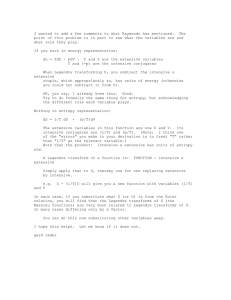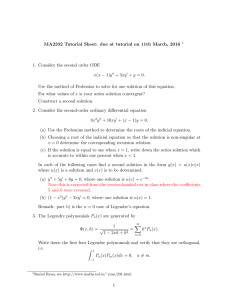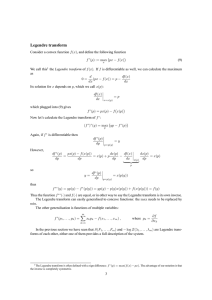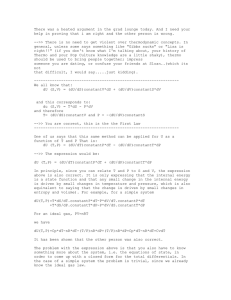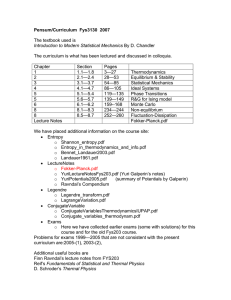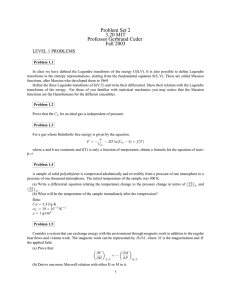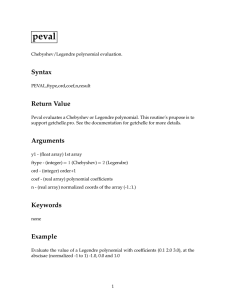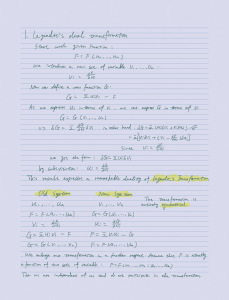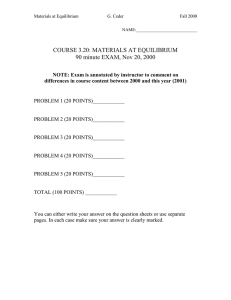Hello, I have been taking a look at the Legendre Transformations. ... wondering about the derivation in Pset 2 #1.5. I...
advertisement
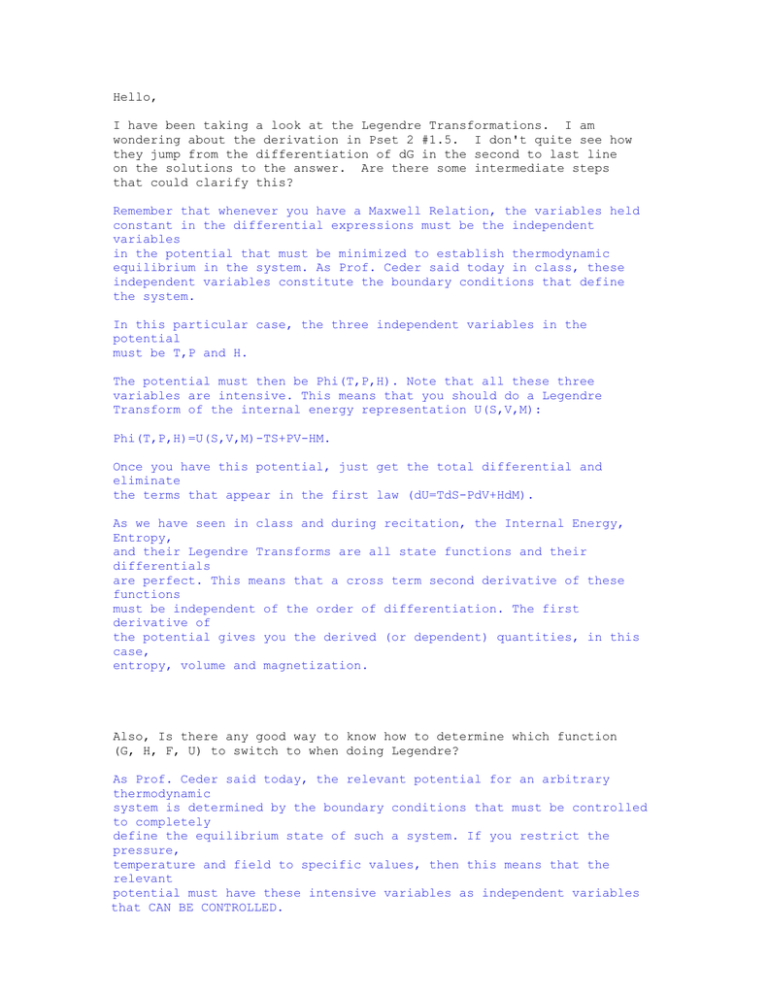
Hello, I have been taking a look at the Legendre Transformations. I am wondering about the derivation in Pset 2 #1.5. I don't quite see how they jump from the differentiation of dG in the second to last line on the solutions to the answer. Are there some intermediate steps that could clarify this? Remember that whenever you have a Maxwell Relation, the variables held constant in the differential expressions must be the independent variables in the potential that must be minimized to establish thermodynamic equilibrium in the system. As Prof. Ceder said today in class, these independent variables constitute the boundary conditions that define the system. In this particular case, the three independent variables in the potential must be T,P and H. The potential must then be Phi(T,P,H). Note that all these three variables are intensive. This means that you should do a Legendre Transform of the internal energy representation U(S,V,M): Phi(T,P,H)=U(S,V,M)-TS+PV-HM. Once you have this potential, just get the total differential and eliminate the terms that appear in the first law (dU=TdS-PdV+HdM). As we have seen in class and during recitation, the Internal Energy, Entropy, and their Legendre Transforms are all state functions and their differentials are perfect. This means that a cross term second derivative of these functions must be independent of the order of differentiation. The first derivative of the potential gives you the derived (or dependent) quantities, in this case, entropy, volume and magnetization. Also, Is there any good way to know how to determine which function (G, H, F, U) to switch to when doing Legendre? As Prof. Ceder said today, the relevant potential for an arbitrary thermodynamic system is determined by the boundary conditions that must be controlled to completely define the equilibrium state of such a system. If you restrict the pressure, temperature and field to specific values, then this means that the relevant potential must have these intensive variables as independent variables that CAN BE CONTROLLED.
